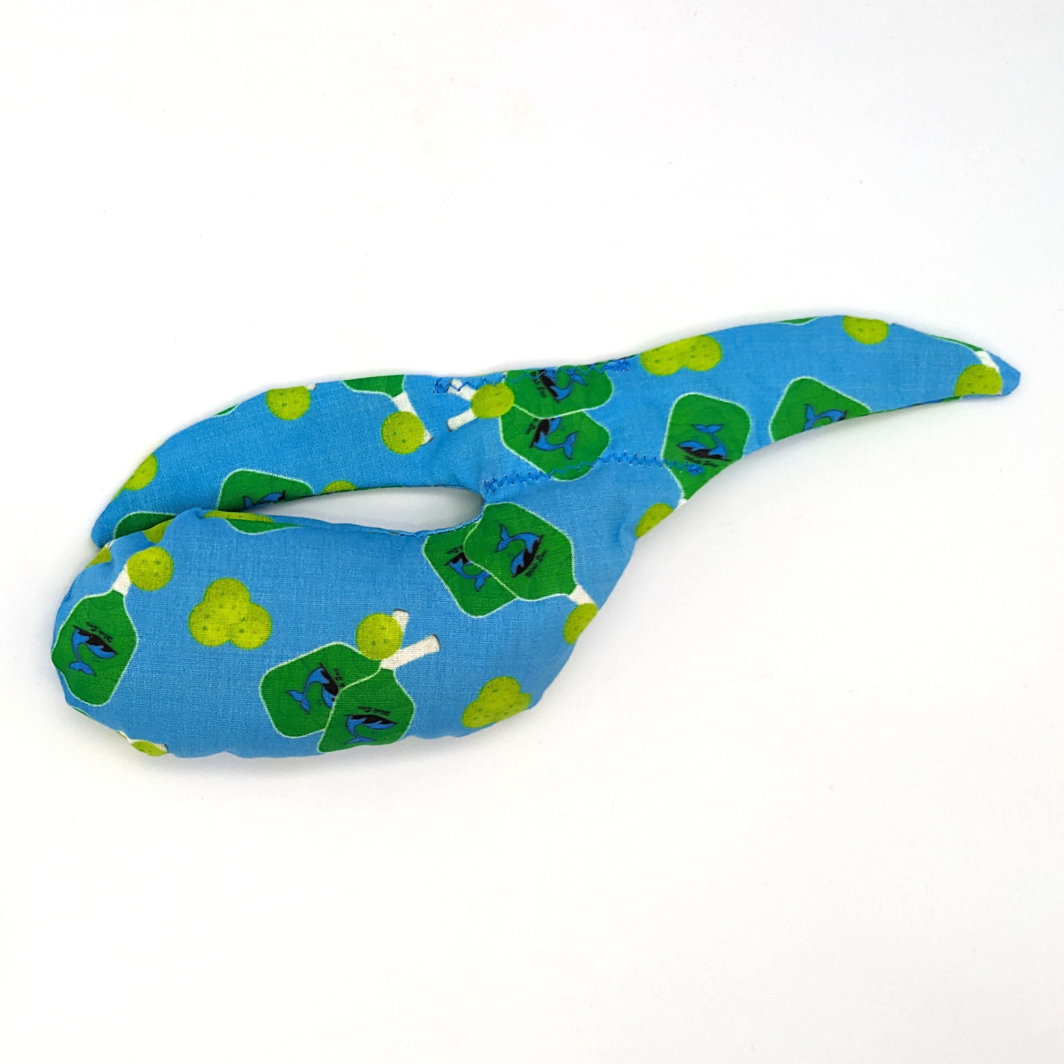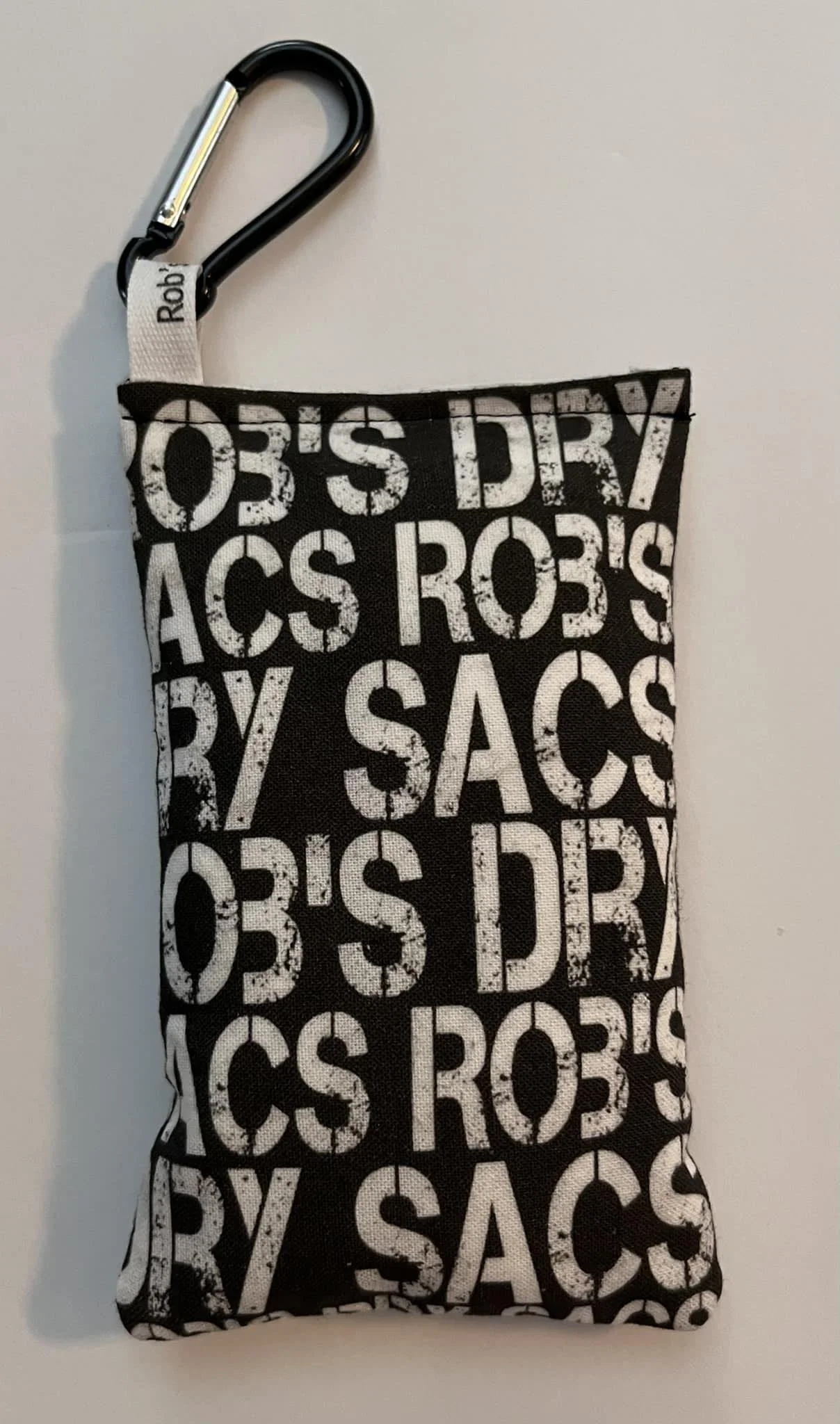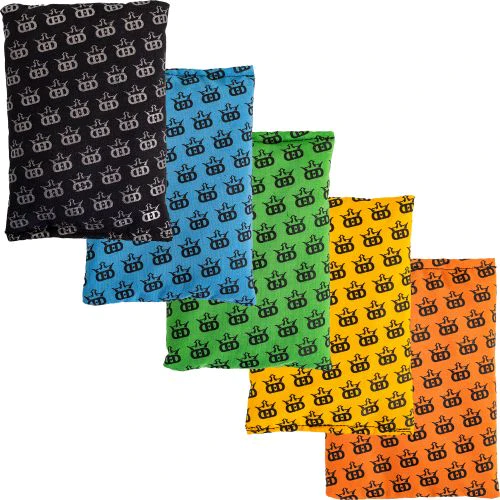Let’s Chalk about Birdie Bags
If you have played disc golf for any amount of time, you know what a birdie bag is. It is the ‘bic lighter’ of the sport; they’re given out like candy at tournaments and leagues, and we lose them just as often as we get them. It is a tool used to keep your hands dry so that you can have better grip and contact with your discs when weather or other situations are making your palms sweaty or sticky. There are many variations, but according to the National Museum of American History, the first birdie bag for disc golf was invented and sold by Brock Woodall in 2001. It was a cotton fabric bag stuffed with sawdust. These days fabrics and materials vary, and today I’m going to explore some of the available options out there in the world.
First, let’s talk about one of the most unique and popular models, the Whale Sac. As the name implies, these bags are shaped like a whale, with the tale often used to tie the sac to your bag or person. Made popular by touring pro and company founder Tina Oakley, many of the pros use this bag, and there is an extensive sponsorship team to prove it. And unlike many bags, these are filled with a stone and clay powder mix that allows your hands to stay dry without lingering residue. And 3% of all sales are donated to Save the Whales, a noble and worthy cause indeed.
Next up is DryvBags. Their approach is to bring a proprietary blend of materials to maximize grip. Their motto is, “No gimmicks, just disc golf grip products.” In addition to a variety of bags, they also make a grip bar (think sticky soap) and loose powder. If you like a tacky grip, then these bags are for you. While they won’t disclose their ingredients, at least one of the substances can leave a residue on the hands that gets sticky after a few holes. They also have bags in different sizes to accommodate all players.
I would be remiss if I didn’t mention the actual Birdie Bag. This version is comprised of kiln dried wood powder and is so messy that you must keep it in a zip lock bag. It is certainly a popular model, and according to them, “Twelve world champion disc golfers and many top pros agree.” For my playing style, this bag is too cumbersome, I don’t want to have to pull it in and out of a plastic bag each time I use it, but hey that’s just me. The longevity and availability of this bag is proof that plenty of players like it.
A new player in the market is Rob’s Dry Sacs. Named after the owner, Rob’s approach is to take custom orders, providing customers with a wide range of colors and patterns, and even an option to provide your own graphics. He also includes an eye hole and carabiner so that you can attach the sac to your cart or disc bag. The blend seems to be mostly chalk and keeps the hand dry throughout the round. This is a hand feature for those of you that seem to constantly leave your bags behind on the course.
Next, I want to talk about what I’m going to call ‘brand bags’. That is, bags with various disc golf manufacturer logos on them. I don’t know who makes them, but they are always showing up in player packs. These can vary in size, quality, and materials but because of their ‘free’ nature, they are often the most used. They seem to mostly be chalk, but as I did research for this article, I have discovered that what I often think is chalk is actually dried wood powder. You learn something new every day!
And finally, I am going to talk about what I think is the most extreme option, and that is climbing chalk. This is loose chalk powder that is kept in a bag, and you just dip your hands into it and get doused in the powder. Nikko Locastro may be the best-known player who regularly uses this method. While it certainly keeps your hands dry, at the end of the round you’ll have chalk residue all over your clothes, discs and maybe even your bag.
So, what kind of birdie bag do you use? What is your preferred material? How often do you use them, if at all? Leave a comment down below, and thanks for reading, see you next time. Cheers.




